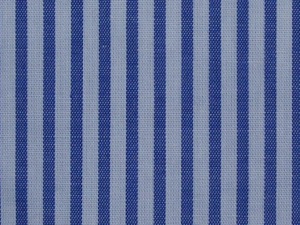Whether you are buying your shirts off the rack or going the bespoke route, cotton is undoubtedly the fabric of choice when it comes to shirt manufacturing. So, what makes cotton so popular? Cotton fibers are highly porous, which makes the fabric light and breathable. This quality also enables the fabric to be dyed easily, making it a natural choice for designers. Cotton does not require the maintenance level of some other fabrics such as silk; it does not need to be dry cleaned. However, because the fibers are porous, shrinking of the material is a possibility. While the U.S has historically been the world’s leading producer of cotton, the title is currently held by China, which produces over 7 million tonnes a year. Cotton growth requires a sunny environment with moderate rainfall, resulting in large amounts of Cotton being grown in India, China, Egypt and the Southeastern U.S.
Different types of cotton are delineated by yarn length (staples):
Egyptian Cotton – Egyptian cotton is regarded as the gold standard of cotton, with the longest fiber of any type of cotton – 1 ½ inches or greater – considered the finest cotton in the world. Egyptian cotton is considered soft, silky and strong all at once! Today, Egypt is exporting lower grades of cotton in addition to the extra-long fiber cotton that it has become known for.
Sea Island – Sea Island cotton is grown on Islands off of South Carolina, Texas, Florida and in the West Indies. This high grade of luxurious cotton is made from strong, long, thin silk fibers. It is the U.S version of Egyptian cotton.
Pima – Pima is also long-length fiber cotton, but less expensive than Egyptian or Sea Island. Pima cotton is a generic label (honoring the Pima Indians in the Southwest) given to extra long staple cotton grown in any country from a particular type of long-staple cotton. The primary producers of Pima cotton are the U.S, Australia and Peru. Any of these producing countries can properly label their cotton: Pima.
Cotton Processing
Mercerization: is a chemical finish in which the cotton is treated with a cold concentrated solution of Sodium Hydroxide (Caustic Soda) to swell the fibers, so that they more readily absorb dye and increase in strength. The fabrics also become extremely soft.
Combed Cotton: Combing straightens out the fibers, resulting in finer, softer and more durable yarns.
So there you have it – a Cotton 101 primer! If you have any question or suggestion related to this article, let us know.
Filed under: Dress Shirts, Fabrics Tagged: Bespoke shirts, Combing, Cotton, Egyptian Cotton, Gossypium barbadense, Mercerised cotton, Shirting fabrics, Textile



